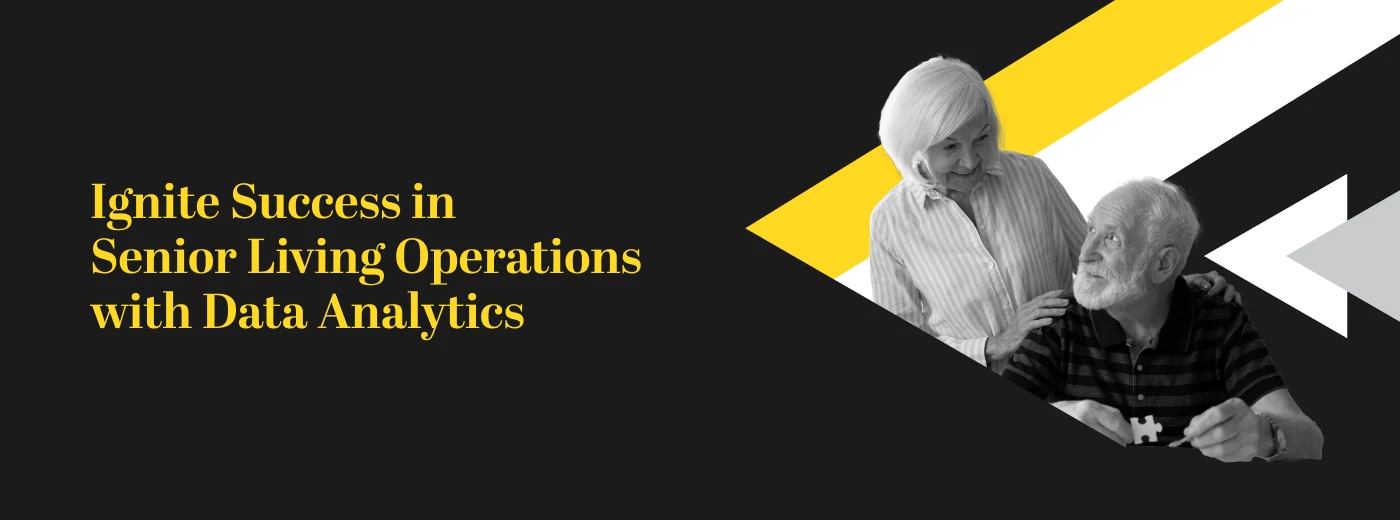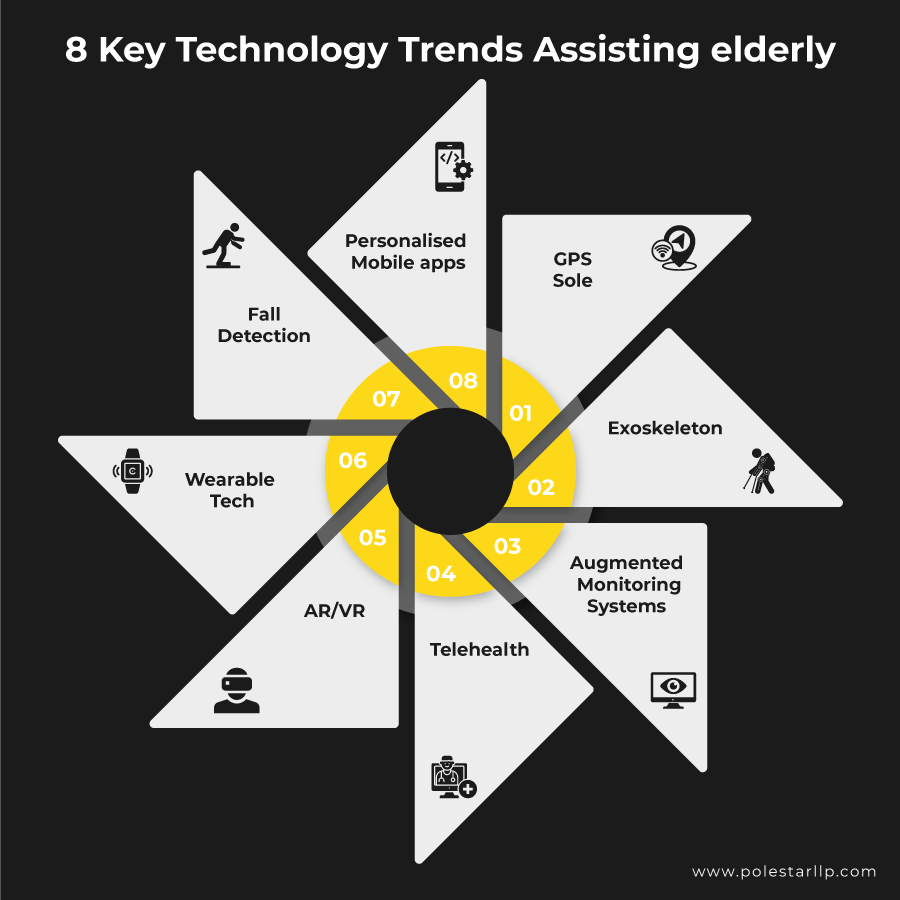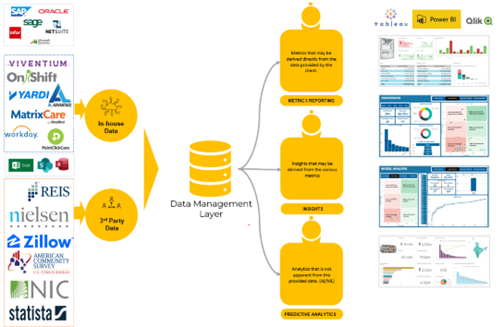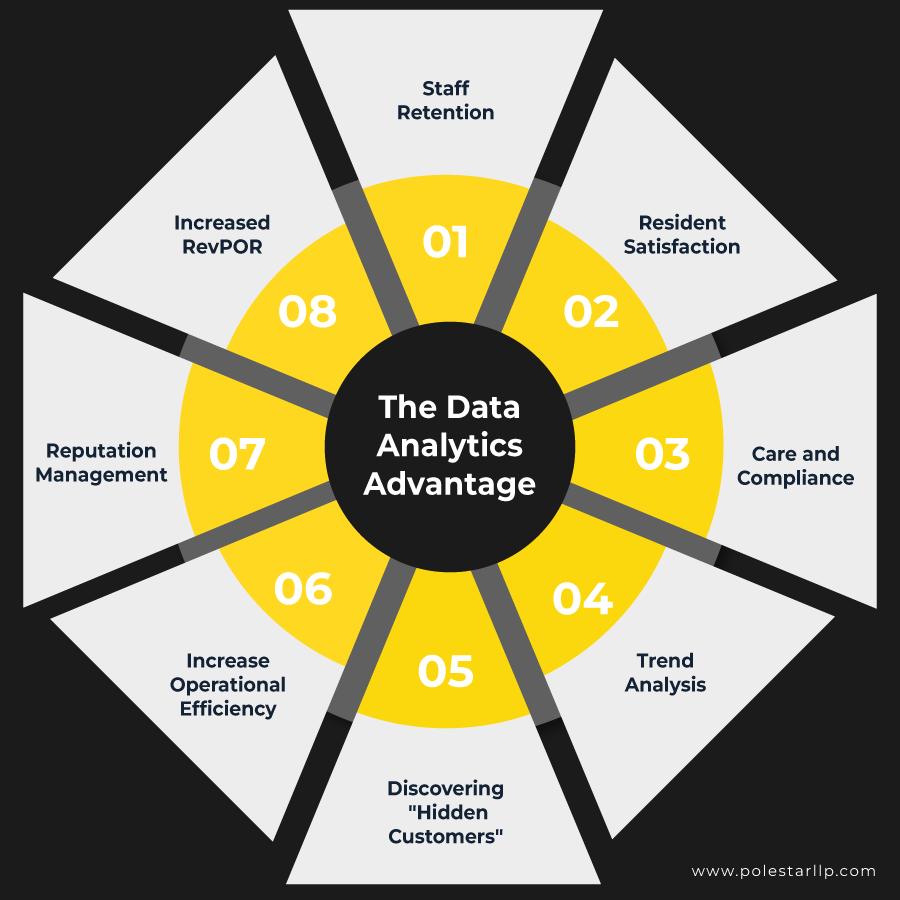
Sign up to receive latest insights & updates in technology, AI & data analytics, data science, & innovations from Polestar Analytics.
Editor's note: This blog is for leaders of senior living operators, we dive into the key challenges facing the industry and how data and insights can assist in tackling these challenges.
Market players like LCS are doubling down on Senior living analytics, this is not a short-term trend, most companies are transforming their operations and taking the help of big data.
The deputy secretary of HHS, Andrea Palm emphasized the development of a digital healthcare system and the importance of leveraging data and AI technologies to advance healthcare. API investments and predictive decision support interventions are key areas of focus going forward.
In this blog, we will delve into Senior Living 2.0: Data analytics in senior living operations is a mega trend that senior living operators must acknowledge. Let's understand how it can be used to uncover hidden customer segments, enhance staff retention, and navigate compliance challenges amid economic headwinds.
The industry is facing a critical need for an additional one million workers due to the growing aging population. Some key trends in the industry include the use of technology, using artificial intelligence, stricter regulation and compliances, hybrid communities, and invisible senior living.

| “Our goal is to empirically show through data that you live longer, healthier and happier lives by living in a senior living community.”
- Jack Callison, CEO of Sunrise senior living.
|
1. Uncovering Hidden Residents Segments:
Senior living marketing and sales teams' understanding may be limited about the “reluctant shopper”, i.e. anonymous web browser, or older adult who is actively exploring websites but is avoiding sales interactions. They are termed “hidden Audiences” as they are hesitant to connect to operators’ sales teams.
72%, expressed a move-in timeframe ranging from "immediately" to "within a year". With a clear path to pricing and facilitating a conversation with a salesperson, marketing can gently guide these prospects toward making informed decisions.
2. Enhancing Staff Retention through Data Analytics:
As senior living operators increasingly realize the financial impact of missed occupancy revenue. Staffing emerges as a critical factor in addressing this issue, particularly in the face of rising attrition rates and turnover. The pressing concern is that understaffed care teams are experiencing accelerated burnout, jeopardizing both the quality of care provided and the financial bottom line in the long run. By embracing senior housing operations dashboards organizations can revolutionize their workforce and effectively plan for staffing needs.
To address workforce planning, it is essential to align technology solutions to their priorities, utilize AI techniques for skills and talent profiling, invest in labor market insights, and enhance workforce planning maturity. Also, benchmarking the pay grade and running programs like ‘375 for 37.5’ [$ for hours in a week] helps attract (and retain) skilled nursing staff.
3. Navigating Compliance Challenges:
For Care/ Operations executives, data collection becomes a key tool to monitor the impact of loneliness and isolation on residents. Operators are using sophisticated tools like Augi, and Safely You to monitor falls. AR and VR technology is also being tested.
Data can be used to track residents' health and wellness, preferences, and interests. It can then be used to personalize care plans and activities. Senior living analytics solution is the way forward.
It can also accelerate emergency response by monitoring residents' vital signs and activity levels in real time. Which can then be used to alert staff to potential emergencies, such as falls or changes in health status.
4. Future of new locations:
Senior living operations face numerous challenges such as construction headwinds and the cost of capital, making it difficult to expand their footprint. Hybrid builds involving smaller unit mixes require less financing. These developments allow operators to incorporate independent living units, attracting residents with lower acuity needs and a potentially younger demographic.
Another innovative take on senior living lies in "invisible" communities, which are communities that are integrated into the surrounding community and do not stand out as senior living
5. Increase occupancy rates:
To increase satisfaction rates among residents, senior living facilities can utilize data for faster problem resolution and improved communication reducing occupancy drop-offs. Higher occupancy rates generate more revenue and enhance reputation, attracting future residents. Data platforms help ensure accurate billing and prevent revenue loss from billing errors.
Churn analytics is valuable for senior living operators to understand and address the factors that contribute to residents leaving their facilities. By leveraging churn analytics, operators can gain insights into patterns, trends, and potential indicators of resident attrition. It’s leveraging AI to analyze resident behavior metrics, involves analyzing the profile of the tenants and bucketing them into different profiles based on their possible risks and taking preventive measures.
Lower churn rates will correlate to high resident satisfaction and lead to larger margins, and higher profits.
The senior living industry has also adopted Business Intelligence capabilities to create new pricing models based on consumer profiles, market dynamics, and operational data. The next frontier for senior living operations management is to Drive results by looking forward instead of relying on past data.

Siloed legacy environments - Transferring Data - Cloud-based Environments
With the availability of modern maintenance management systems, collecting data and monitoring key performance indicators (KPIs) is no longer a daunting task for operations professionals.
Dashboards play a crucial role in senior living by providing executive directors with a comprehensive overview of KPIs from various platforms in one centralized location. The convenience of having all relevant data on a single screen allows executives to easily monitor trends, identify areas of improvement, and make informed decisions in real time.
In the realm of senior living, various types of data analytics are utilized to gain valuable insights and enhance the overall experience for residents and staff. Reputation analytics plays a crucial role in analyzing public perception, evaluating online reviews, and identifying areas of improvement. This enables senior living communities to take proactive steps in addressing concerns and enhancing their reputation.
Data Intelligence helps operators track and measure staff attitudes and opinions, identifying potential issues with staff/resident satisfaction and retention. By analyzing feedback, managers can make improvements to increase job satisfaction, such as adjusting compensation, providing training, or implementing flexible scheduling. Sentiment analysis enables monitoring of employee sentiment over time, identifying trends, and taking proactive measures to prevent high turnover rates.

Senior living analytics solution can be used to improve the senior living industry in a number of ways. By understanding the needs of residents, staff, and regulators, senior living providers can use data to make better decisions about everything from marketing to staffing to care planning.
Analytics for the senior living industry can help senior living operators meet this demand by providing them with the insights they need to operate more efficiently and effectively.
Polestar Analytics provides Senior Living Insights, from optimizing operations to improving resident care, we empower providers to make informed decisions and stay ahead in the rapidly evolving senior living landscape. Not just that we also help you gauge the performance metrics for senior living operations.
About Author

Information Alchemist
Marketeer at heart, story creator by passion, data enthusaist by profession.